If you are a predator hunter, you must know the difference between a fox vs. coyote. Fox hunting typically has a shorter season than coyote hunting, and you must avoid taking the wrong animal.
Because the fox and coyote often show up at to same prey-distress calls and bait piles, most of us focus on first learning what does a coyote look like, before we concentrate on the coyote vs. fox differences.
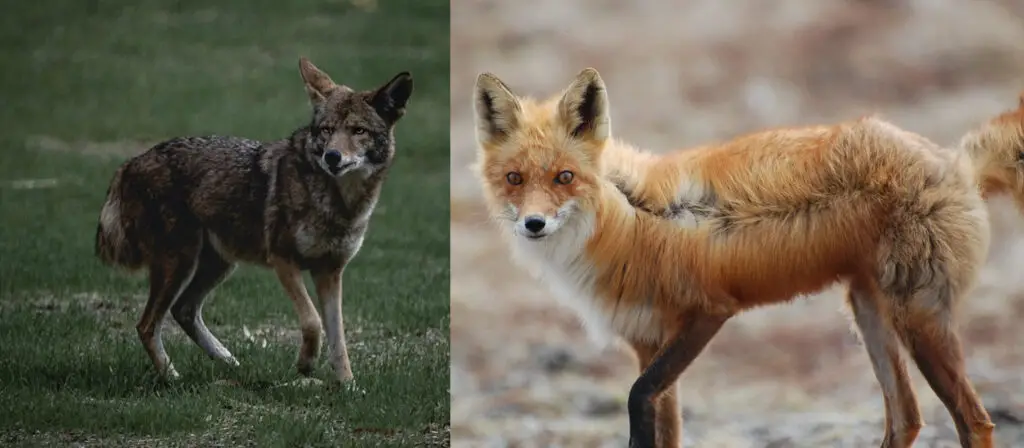
Fox vs. coyote: How to quickly spot the differences.
Knowing the differences between foxes vs. coyotes takes only a tiny amount of practice, whether you are noticing them in your backyard or hunting them at some distance. Size is the key, but even size can be misleading, especially when coyote pups are juveniles.
A fox is smaller, has shorter legs and body, less muscular development, a flatter skull, and a bushier tail than a coyote. A fox is a member of the Vulpes, a genus of the sub-family Caninae, but coyotes are members of the genus Canis.
If you have a back yard intruder and wonder of it is a coyote vs. fox, read these articles:
For sounds you might be hearing, Why does a fox scream at night?
What are those coyotes howling about, Translating coyote sounds.
Is it a wolf or a coyote? How to tell the difference between a coyote and a wolf.
Is that coyote poop in your yard?
How to handle suburban coyotes.
Coyote vs. fox
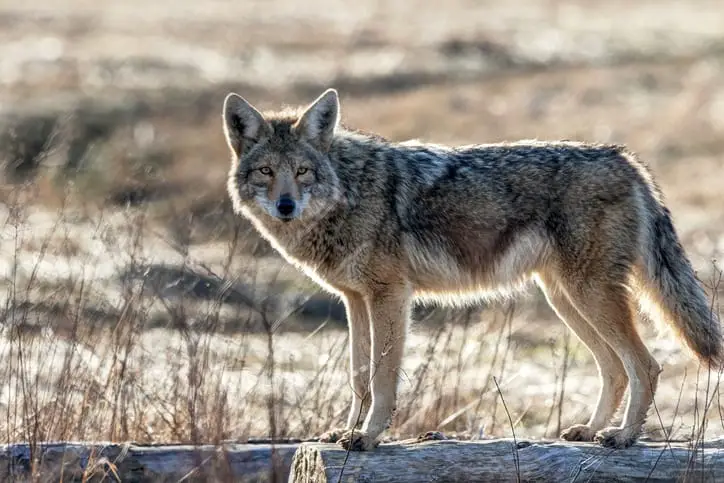
What is a coyote?
A coyote is an undomesticated canine native to North America. Its slender muzzle, bushy, low-hanging tail, and pointed ears resemble a camouflaged German Shepard. Intelligent, highly communicative, and designed to adapt and thrive in almost any environment, a coyote is also surplus-killing predator.
The scientific name for the species” Canis latrans” means” barking dog.” There are 19 known subspecies of the coyote. The Canis latrans var (more familiarly known as the Eastern Coyote) is the largest of the subspecies.
Coyote fur colors are varied, often geographically, but predominantly light gray or brownish yellow patches mixed around its body with black and white. A coyote’s eyes are yellow (most domestic dogs are brown). A coyote’s tail often has a black tip at the end and is always carried low when moving at any speed (unlike domesticated dogs).
Coyote tracks are often straight lines (compared to a dog’s meandering path) and are narrower and more elongated than a dog’s. Related: Learn how to read coyote tracks and scat.
Western coyotes have an average weight between 20-25 pounds, while the Eastern Coyoteaverages between 25-45 pounds. The largest coyote ever recorded topped the scales at 75lbs.
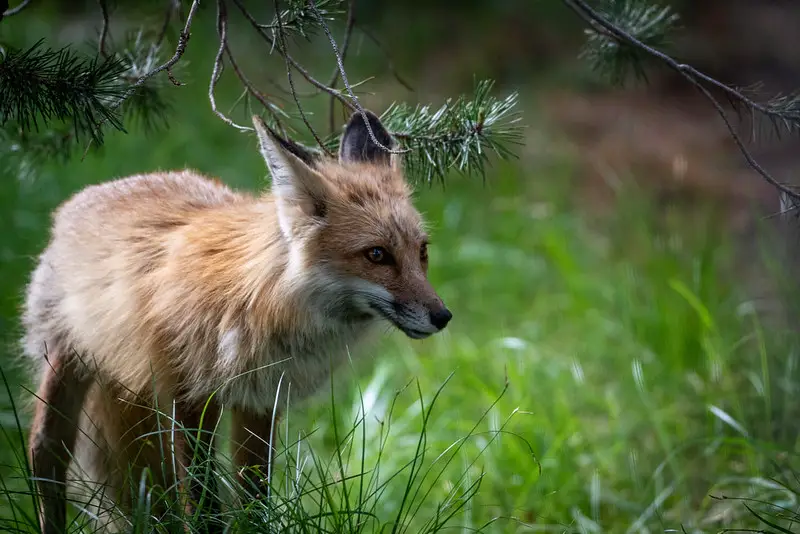
What is a fox?
Foxes are small to medium-sized dog-like carnivores of the Canidae family. Foxes are arrhythmic opportunistic predators with the same vertically slit pupils as felines, allowing them to see during the day or night by regulating the amount of light entering their eyes.
Foxes in the United States weigh between 10-15 pounds, are a threat to your chickens, but not a hazard to humans unless you are bitten by a rabid fox.
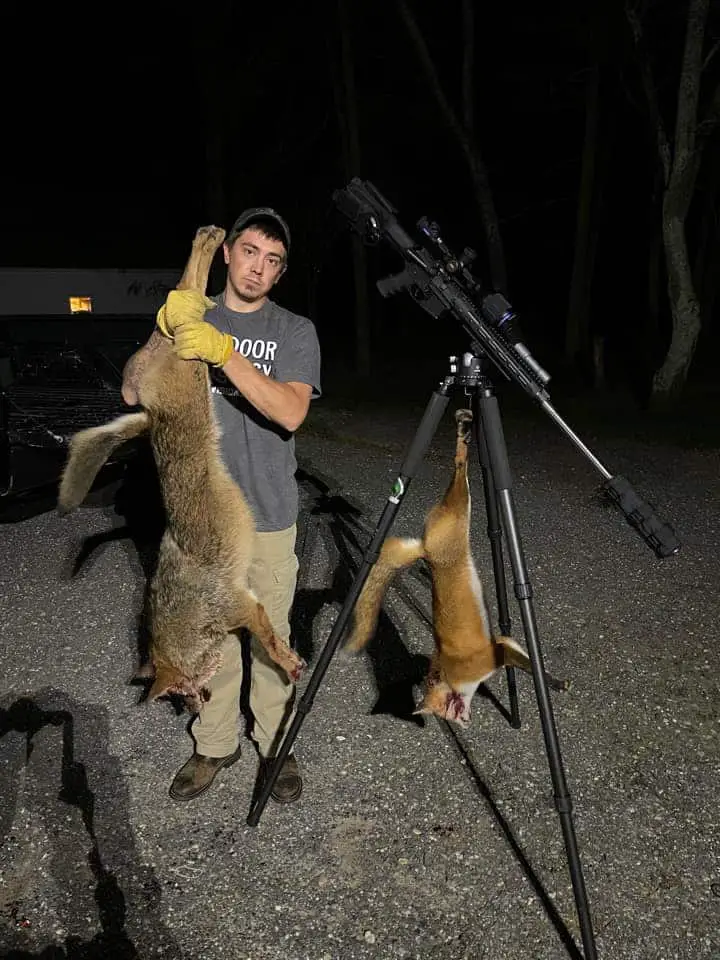
Fox vs Coyote: Body Size
In the picture above, you can see the massive size difference between foxes vs. coyotes. For example, a big red fox might get 36” long and 20” in height. On the other hand, a regular-sized coyote will be closer to 50” in length and 26” in height.
To make the fox vs. coyote question easier to answer, here are coyotes next to a German Shepard and a Shih Tzu next to a fox.
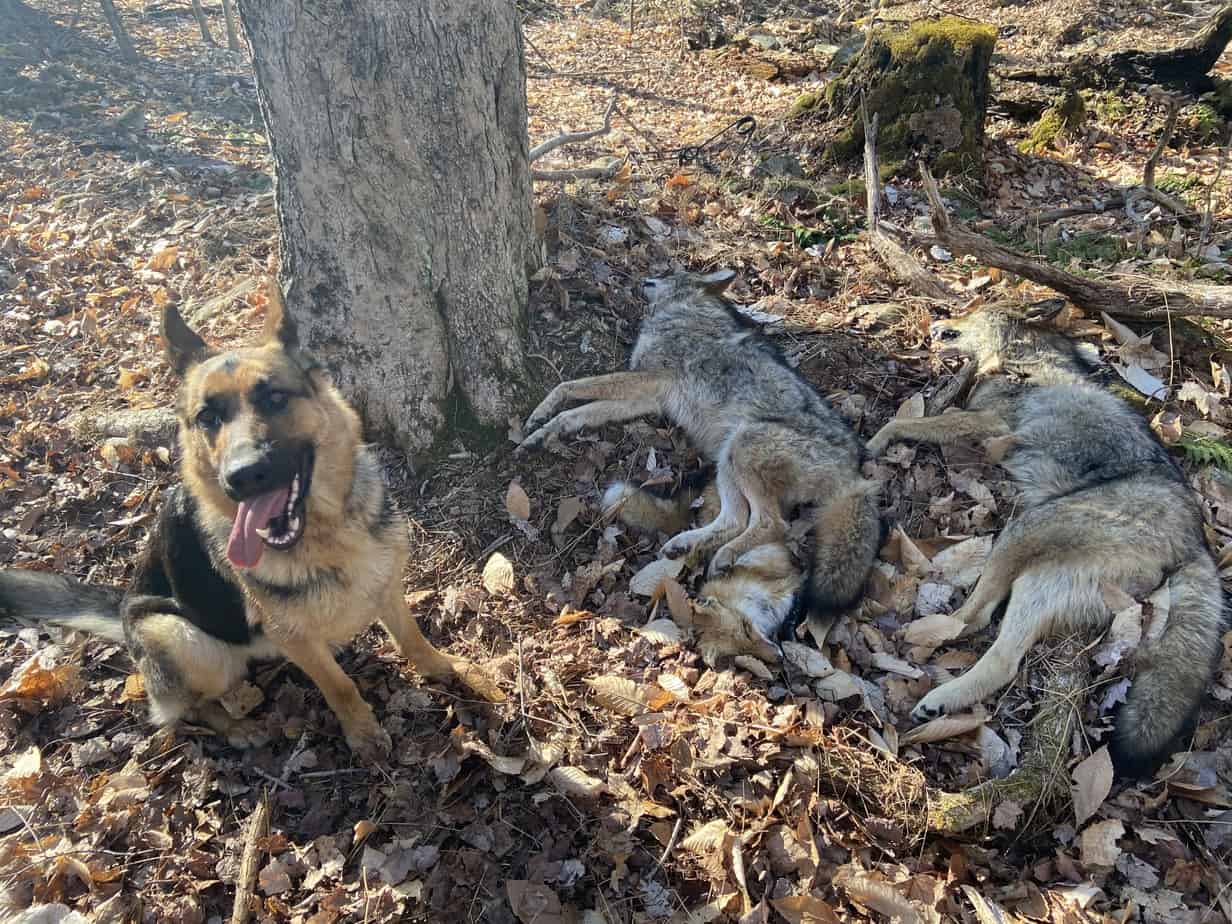

Fox vs. coyotes: Do either hunt in pack?
Both the coyote and the fox hunt alone or in pairs, unless they are training their young to hunt. When either coyotes or foxes are teaching their young, you may see more than 2 of each.
Coyotes never hunt in packs; they hunt alone or with one or two family members. Coyotes are ambush predators, carefully stalking and pouncing upon unsuspecting prey. Most larger prey taken by coyotes are sick or injured and require no pursuit, coordination, or collaboration.
That coyotes do frequently hunt and travel alone is one of the key differences between them and wolves. While a wolf may sometimes hunt by itself, their social structure and the prey they pursue normally mandates the larger numbers of a pack.
The grey wolf, making a comeback in parts of the United States, is a pack hunter. We do not need the gray wolf in New York, or any other state.
Foxes never hunt in packs and never coordinate their hunts with each other. Paired foxes are nothing more than mates accompanying each other during the mating season. They will not “team up” on an animal or your pet.
Coyote vs. fox: Will they fight each other?
A coyote can and will kill a fox under certain circumstance. However, they typically avoid each other. While some researchers insist coyotes force foxes from their territories, I have watched red fox frequent coyote bait piles for days on end.
According to the experts (which I have anecdotally proven false), the hierarchy runs like this. Coyotes force fox out. The red fox forces the gray fox out. But I have never found this to be true. Even bait pules regularly visited by Fishers seem immune to any of these species appearing simultaneously.
Fox vs Coyote: Tail differences.
The coyote always has its tail hanging down when running, standing, or walking (trotting). The fox has the bushier, longer tail, and it is normally held high.
Fox vs Coyote: Coat Color Differences.
Guess what? The red fox is colored red and white, with black feet (socks). The gray fox is colored gray and black. You can’t mistake them for each other.
Coyotes, on the other hand, can be brown on top and white on the bottom.
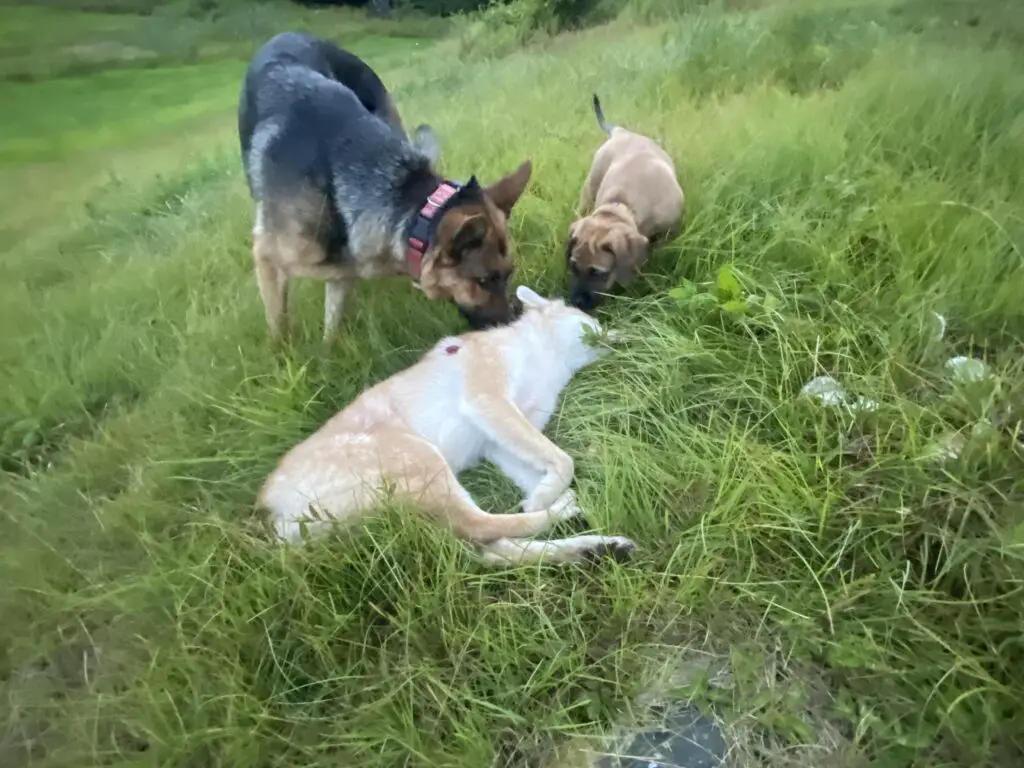
But the coyote coat color is usually various shades of gray, blacks, and yellows.


